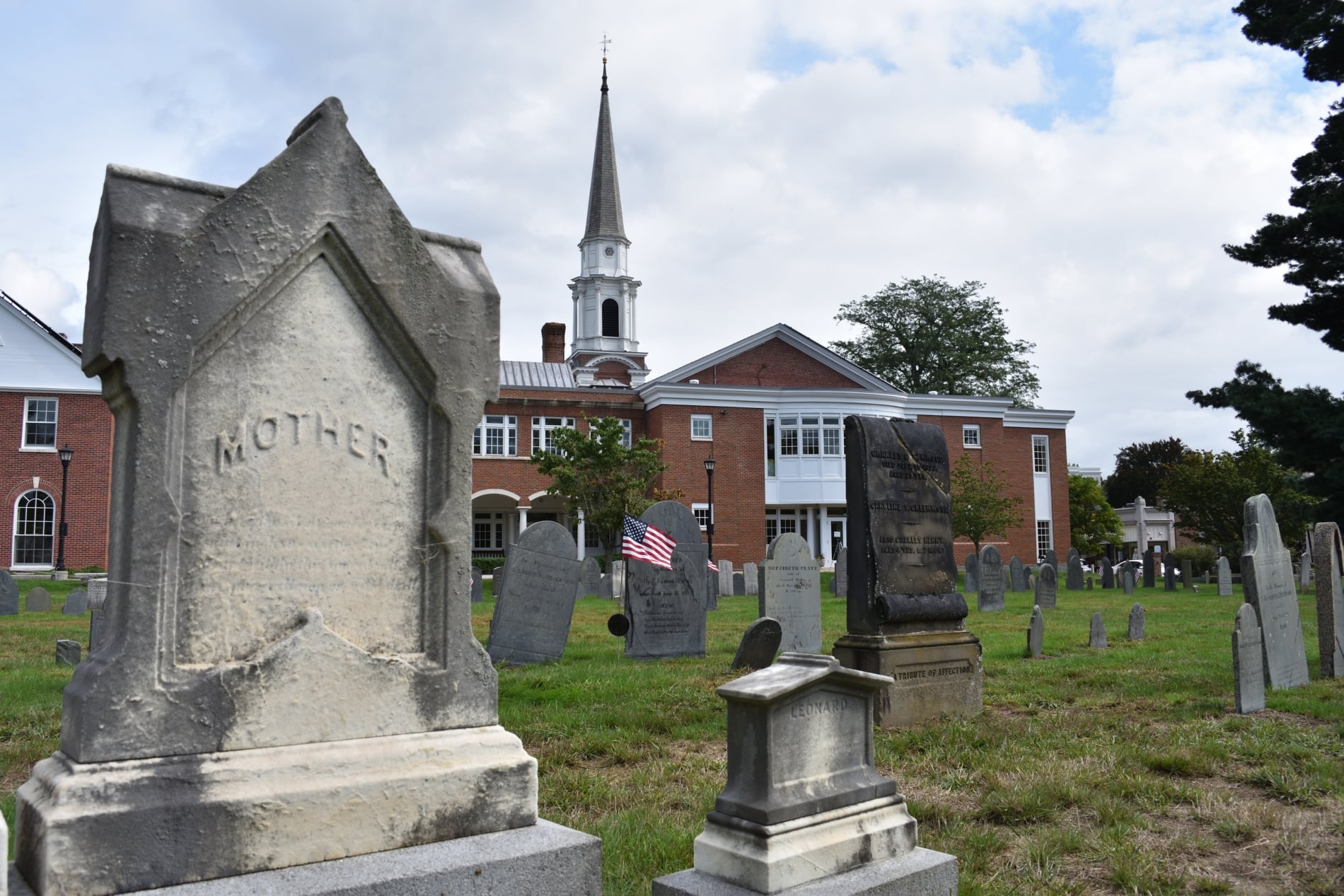300 Years Ago: An evolving community, A nation’s birth FRame church’s Foundation
Since the 1720s, the inhabitants of West Needham, present-day Wellesley, had attended worship in what is now Needham Center. Under the best of circumstances, it was nearly an hour’s ride, in a day when roads were poor and distances were great. With the snow and ice of winter, or the rain and mud of any New England season, the trip was arduous. By June of 1774, 86 residents voted to break away to build an independent meetinghouse that would serve as the center of its own community.
Within two years, however, many of those who had signed the agreement were fighting in a war against a colonial government, draining both money and supplies. The financial and human costs of the war delayed the construction of the meetinghouse. The building was not completed until sufficient funds were raised—20 years later.
Finally, on Thursday, September 6, 1798, the Congregational Church of West Needham was organized with seven men and three women. They adopted the first church covenant and they met in the first of four buildings to stand on the present church site. Within a year, they had selected two deacons and called the first pastor, Rev. Thomas Noyes.
100 Years Ago: with vision and grace, congregation rAises church from fiery devastation
When Wellesley Village Church burned to the ground in a disastrous fire in 1916, the congregation faced a long road ahead to rebuild and restore. Without a parish house and chapel, which were eventually completed in 1919, and the sanctuary, finally rebuilt in 1923, the congregation sought to be a church in temporary quarters: Town Hall, members’ homes, other churches in Wellesley. Members, ever resourceful, found ways to worship outside of the sanctuary, and the staff pioneered novel ideas for Sunday school and other gatherings.
This period was a troubled time in the world. In 1919, millions perished in a global pandemic, known as the Spanish flu. At the same time, war-weary soldiers, who if still alive were witnesses to the horrors of battle, made the slow journey home from the “Great War” in Europe. Closer to home, disbelief lingered following the deadly molasses flood, a freak accident, in Boston’s North End. Was the world coming apart?
Despite all this, work on rebuilding Village Church persevered, sustained by the strength and resolve of church members.
Worship bulletins, the most consistent documented resource, imply that the church, in its effort to rise from threat and destruction, and within a world struggling mightily, was still hearing a call to experience God, to support those in need, and to remain a leading presence in the community. The historical notes tell a story of hope of a congregation whose faith continues to be both a matter of belief and how it lives day by day.
